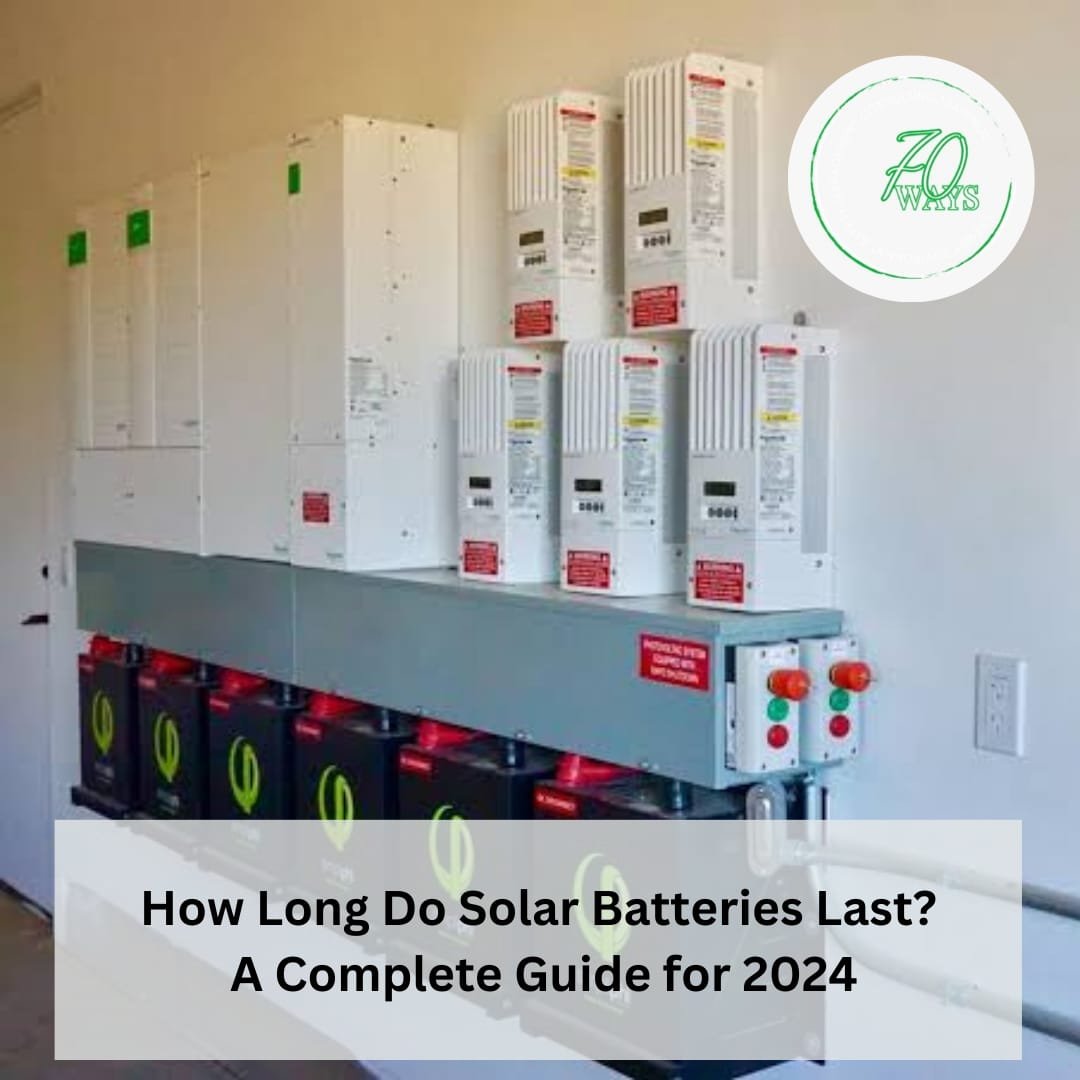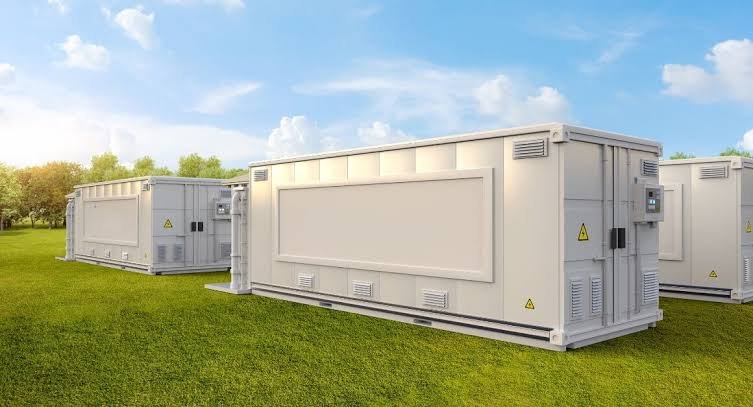How Long Do Solar Batteries Last? A Complete Guide for 2024
As the world increasingly embraces sustainable energy solutions, solar batteries are gaining popularity among both homeowners and businesses. These batteries store excess energy produced by solar panels for later use and serve as reliable backup power during outages. Understanding the lifespan of a solar battery is vital for making a wise investment.
-
Understanding the Lifespan of Solar Batteries
Solar batteries are intended to store energy generated by solar panels for use when sunlight is not available. Typically, solar batteries last between 5 to 25 years. This range depends on various factors, including the type of battery, how it is used, and the environmental conditions in which it operates. Choosing a high-quality solar battery is essential for ensuring dependable performance and longevity.
-
Key Factors Influencing Solar Battery Lifespan
Several important factors affect how long a solar battery can last:
-
Type of Battery:
The battery you select greatly impacts its lifespan. Common types include:
-
Lead-Acid Batteries:
These are known for their reliability and affordability but usually last only 3 to 5 years. They require regular maintenance and are heavier, making them more suitable for smaller applications.
-
Lithium-Ion Batteries:
These have become the preferred choice for solar energy storage, lasting up to 15 years. They offer higher energy density, allowing them to store more energy in a compact size, and require less maintenance compared to lead-acid batteries.
2. Flow Batteries: This newer technology can last between 15 to 25 years. They permit a full depth of discharge, meaning users can utilize their entire capacity without harming their lifespan. However, they tend to be more expensive and are generally used in larger industrial settings.
3. Depth of Discharge (DoD): This term refers to the percentage of the battery’s total capacity that can be used before it needs recharging. Sticking to recommended DoD levels is essential for prolonging battery life.
Lithium-ion batteries often have a DoD of 80% to 95%, allowing for extensive use without damage.
Lead-acid batteries typically have a lower DoD of around 50%, meaning only half of their capacity should be utilized to avoid shortening their lifespan.
By understanding these factors, you can take proactive steps to enhance the lifespan and efficiency of your solar energy system, ensuring you choose the best option for your energy requirements and budget.
-
Warranty and Important Considerations
When considering a solar battery, the warranty is a vital aspect to assess. Warranties provide reassurance regarding the expected performance and lifespan of the battery. Typically, solar batteries come with warranties that range from 5 to 15 years, depending on the manufacturer and type.
-
Key Components of a Solar Battery Warranty
-
Duration:
Most lithium-ion batteries offer a warranty of at least 10 years, while lead-acid batteries usually have shorter warranties because of their limited lifespan.
2. Cycle Count: Warranties often detail the number of charge-discharge cycles included. A higher cycle count indicates a battery that is likely to last longer.
3. Performance Guarantee: Some warranties provide a performance guarantee, ensuring that the battery retains a specified percentage of its original capacity during the warranty period. For example, a warranty might guarantee that the battery will keep 80% of its capacity after 10 years.
4. Pro-Rated Terms: Many warranties are pro-rated, meaning that coverage decreases over time. If a battery fails after half the warranty period, you may receive a partial refund or replacement based on its remaining value.
Before buying a solar battery, it is crucial to carefully examine the warranty terms. Ensure that it covers both performance and manufacturing defects, and understand the claims process. A solid warranty reflects the manufacturer’s confidence in their product and provides reassurance for the buyer.
-
Overview of Deep Cycle Batteries
Deep cycle batteries are designed to be frequently and deeply discharged, utilizing most of their capacity. They differ from regular batteries, which are intended for short energy bursts (like starting a vehicle) and then recharging.
-
Features of Deep Cycle Batteries
High Depth of Discharge (DoD): Deep cycle batteries can discharge 80% or more of their capacity without significantly reducing their lifespan, making them ideal for solar energy storage where maximizing stored energy usage is important.
Durability: These batteries are built to endure multiple deep discharges and recharges, making them more durable than conventional batteries.
Applications: Deep cycle batteries are widely used in renewable energy systems, electric vehicles, and marine applications, demonstrating their versatility and reliability.
While “deep cycle” was originally used to classify battery types, advancements in technology mean that most modern solar batteries, particularly lithium-ion ones, are inherently deep cycle. This characteristic ensures they can consistently and reliably store energy for solar systems.
-
Understanding Solar Batteries vs. Solar Panels
When it comes to solar energy systems, solar panels and solar batteries are both essential, yet they serve different functions and have unique lifespans and maintenance needs.
Lifespan Insights
Solar Panels: Typically, solar panels have a lifespan ranging from 20 to 30 years. They are designed to efficiently convert sunlight into electricity with minimal degradation over time. Most come with warranties that promise performance for at least 25 years.
Solar Batteries: In contrast, solar batteries usually last up to 15 years, depending on their type and usage. Their longevity is influenced by factors such as depth of discharge, cycle life, and maintenance practices.
Installation and Maintenance Requirements
Solar Panels: Once installed, solar panels require very little maintenance. They mainly need occasional cleaning to remove dust and debris that can affect their efficiency. Their robust design allows them to withstand various weather conditions with little intervention.
Solar Batteries: On the other hand, solar batteries need more regular monitoring and maintenance to ensure they operate at peak performance. This includes checking battery health, ensuring proper ventilation, and using monitoring apps to keep track of performance. Proper installation in a suitable environment is crucial to avoid overheating and other issues that could shorten their lifespan.
Functionality in the Solar System
- Solar Panels: These panels generate electricity from sunlight but do not store it. They are the primary source of renewable energy in a solar power system.
- Solar Batteries: In contrast, solar batteries store excess energy generated by the panels for use during times when sunlight is not available, such as at night or on cloudy days. They act as a reliable backup power source, ensuring a consistent energy supply.
-
The Importance of Quality Components
Given that solar panels generally outlast solar batteries, it’s vital to choose high-quality batteries that can keep pace with the durability of the panels. Investing in dependable batteries and ensuring proper installation and maintenance can significantly enhance the overall efficiency and lifespan of your solar energy system.
By grasping the differences between solar panels and batteries, you can make informed decisions about your solar energy setup. This understanding ensures that both components work harmoniously to deliver sustainable and reliable energy for your home or business.
-
Maximizing Your Solar Battery’s Lifespan
To ensure you get the most out of your solar battery, it’s crucial to follow best practices for installation, maintenance, and usage. Here are some essential tips to help you maximize your solar battery’s lifespan:
-
Choose the Right Battery
Quality Over Cost: Investing in a high-quality battery from a reputable manufacturer can save you money in the long run. Quality batteries typically come with better warranties and longer lifespans.
-
Suitable Type:
Select a battery type that aligns with your energy needs and usage patterns. For instance, lithium-ion batteries are renowned for their longevity and efficiency, making them a popular choice for both residential and commercial solar systems.
-
Optimal Installation
Professional Installation: Ensure your battery is installed by qualified professionals who adhere to the manufacturer’s guidelines. Proper installation is vital for safe and efficient operation.
-
Ideal Environment:
Place your battery in a controlled environment that shields it from extreme temperatures and harsh weather conditions. A well-ventilated indoor space, like a garage, is often ideal.
-
Regular Maintenance
Monitor Performance: Utilize monitoring systems and apps to track your battery’s performance. Regularly checking its health can help you identify and address issues early on.
-
Scheduled Inspections:
Conduct periodic inspections of the battery terminals and connections to ensure they are clean and secure. This helps prevent potential problems and maintains optimal performance.
Firmware Updates: If your battery system includes software, make sure it’s updated regularly. Firmware updates can enhance performance and resolve potential issues.
-
Adhere to Depth of Discharge (DoD) Guidelines
Recommended DoD: Follow the manufacturer’s recommended depth of discharge to avoid overusing the battery’s capacity. For example, if your battery has a DoD of 90%, refrain from discharging it beyond that level.
- Automatic Settings: Many modern batteries come equipped with settings that automatically manage the DoD to optimize lifespan. Ensure these settings are correctly configured.
-
Avoid Overcharging and Deep Discharging
Balanced Usage: Steer clear of consistently overcharging or deeply discharging your battery. Both extremes can place stress on the battery and diminish its lifespan.
- Smart Controllers: Implement smart controllers that effectively manage the charging and discharging cycles, preventing overcharging and deep discharging.
By following these best practices, you can significantly enhance the longevity and performance of your solar battery, ensuring a reliable energy source for your home or business.
For Consultation click Here.
For Contact details Click Here.
70 Ways Solar Services Overview Click Here.


